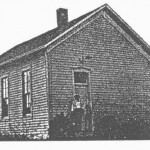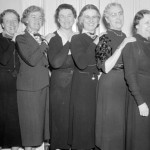Round Tree, “Colored Freedom,” the Mitchem and Roberts Settlements … though these names can’t be found in the index of cities and towns on most current maps of Indiana, the communities that they designated were vital hubs of social and agricultural activity in the nineteenth century. These days, only a few buildings and annual gatherings remain of the thirty to sixty Indiana farming settlements established before the Civil War by African-Americans. While blacks in neighboring states toiled as unpaid servants, slavery had never been legal in Indiana, where African-Americans owned and farmed tracts of up to 300 acres. Some settlers were slaves from other states who had escaped or were escorted into Indiana by Quakers and other abolitionists. Still others were free black landowners fleeing their home states after the passage of laws discouraging their education and travel and threatening their children’s freedom.
Greenville Settlement in Randolph County appears to have been the first such community when it was established in 1822. It was followed by settlements along the Wabash River in Knox and Gibson counties, along with other areas that did not have black residency restrictions. Other significant black pioneer communities existed across the southern part of the state and to the east and northeast of Indianapolis, notably in Dubois, Vigo, Harrison, Orange, Jefferson, Rush, Grant, and Hamilton counties. The settlers purchased and restored previously uncultivated land, grew wheat, rye, hemp and tobacco and raised livestock. The settlements, which often represented entire communities that had been transplanted from other states, grew to comprise homes, barns, churches, schools, general stores and railroad stations.
Descendants of the founders of the Roberts Settlement in Hamilton County still gather at an annual Fourth-of-July homecoming and worship at the Roberts Chapel, built in 1865. The state’s first school for African-American children, built in the Mitchem Settlement in 1891, was recently restored and added to the Indiana State Register of Historic Sites and Structures. This small wooden schoolhouse–once known as the ” Corydon Colored School ” and renamed the Leora Brown School — serves as another window into the history of Indiana ‘s African-American settlement era.
For more information:






















